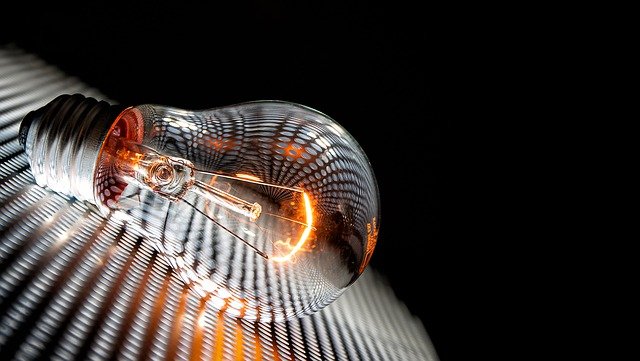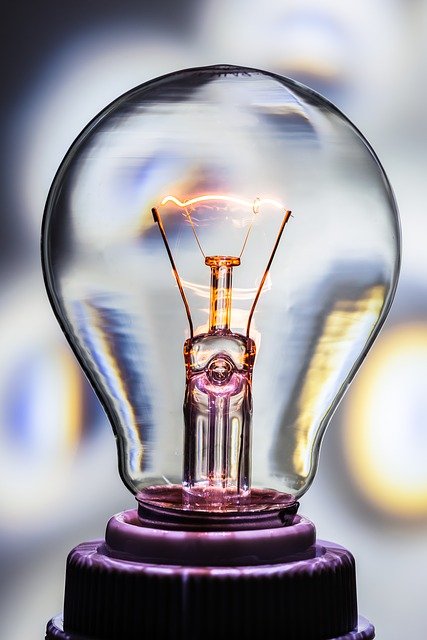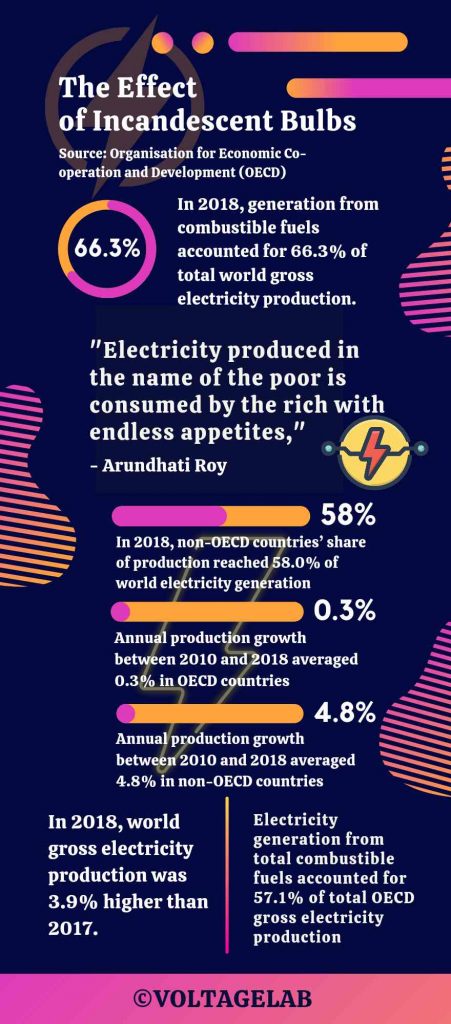How does an electric bulb produce light? Have you ever thought about this? Let us learn it today. There was a time when housewives were responsible to light the house in the evening. Then they used to reserve kerosine oil to light up hurricanes. But with the evolution of the era, Kerosine has been replaced by electric lamps.

The revolution of light took place because of light bulbs or electric lamps. For most people, lighting is still the main use of electricity. Every day we use electric lamps. Now the question arises, how is it happening? How does this electric lamp work? How does an electric bulb produce light?
Today’s article is about the answer to this question.
What is light?
Suppose you are sitting on a field and looking at the green grass. What is happening here is the reflection of light. The reflection of light takes place from the grass and falls on your eyes. As a result, the image of this green grass is floating in your brain. In the language of physics, light is a form of electromagnetic energy. So, ight comes out like small packets which have energy. Light has momentum but no mass. These are called photons. They are the basic components of light. Some other forms of this type of energy are X-rays, microwaves, etc.

One of the constant truths of the world is,
Energy cannot be created nor destroyed, only one form of energy can be converted into another form of energy.
Electric lamps convert electrical energy into light energy. Now the question is, how does this conversion take place? So, o find the answer to this question, let us explore the world of atoms.
Types of Electric Lamp
There are several types of electric lamps. Such as: choke based tubelight, LED energy saving light, table lamp, etc. Incandescent lamps are technically what we understand as electric lamps. Currently, the popularity of fluorescent bulbs, such as energy-saving bulbs or tube valves, is declining day by day. However, today we will discuss this incandescent lamp. We can leave the Fluorescent lamps as a discussion for any other article.
Inner Atomic Energy Exchange
Everything on Earth is made up of tiny particles. We know these particles as atoms. There is a positive entity at the center of the atom. It is what we know as the nucleus. Again, electrons are negatively charged particles. They travel at different energy orbits around the nucleus. Electrons have different energies in different orbits or energy levels. The electron that is the farthest from the nucleus has the highest amount of energy. The problem here is when the electron does not take much time. In less than a second, the electron returns to its previous position. So the electron goes down to a lower level. Here, the extra energy spreads out of the atomic structure. This extra energy comes out in the form of photons i.e. light.

Light energy stays at a certain range of wavelengths. So, when the electromagnetic wave is within that range, the energy becomes light energy. Otherwise, there is an emission of radio waves, microwaves, etc. We can not see these waves with the naked eye. The bottom line is that to get light, we need to excite our electrons. We need to excite them upto a certain range of energy. Let’s see, how does an electric bulb produce light?
The Structure of Incandescent Bulb
The basic structure of incandescent lamps is very simple. At the very bottom of the lamp are two metal parts. There are two electrical circuits here. When you attach the lamp to the holder, this metal part connects to two electrical circuits. Inside the lamp, two hard wires come out of these two metal parts. Again, there is an attachment of two of them to a thin metal filament. Roughly speaking, this is the basic structure of the lamp.

There is a transmission of electricity after the attachment of a bulb to a source. The transmission of electricity takes place from one contact to another and the filament. The transport of electrons from the negatively charged part to the positively charged part is what we know as the flow of electricity. Electricity stimulates the atoms by providing heat. The thinner conductor absorbs heat more easily than the thicker conductor. Because it provides more resistance to the movement of electrons
The structure of the filament is as narrow as possible (about one-hundredth of an inch thick). This narrowing further increases the collision of electrons with atoms.
Collision Of Electrons

This constant collision causes vibrations in the atoms. In the end, the filament begins to heat up. This sudden heat energy excites the electrons in the atom of the filament. You already know what happens when there is excitement in the electrons. Electrons emit energy in the form of electromagnetic waves. This energy is in most cases a dim light. We cannot see this light with the naked eye.
However, when the amount of heat generated in the filament is around 4,000 degrees Fahrenheit or 2,200 degrees Celsius, it emits visible light. This is how we get light from electric lamps.
One thing to note here is that there is a conversion of electrical energy into heat energy here. Light is just a by-product of this process. Usually, we can see the use of tungsten in electric bulbs.
As a matter of fact, on contact with air, the metal starts to react with oxygen. As a result, the filament loses its effectiveness. To prevent this, the inside of the electric lamp is kept airless. The inside of the lamp is also filled with inert gas. Inert gases usually do not react. So there is no problem with filament. However, the main reason for keeping the inert gas in the lamp is to reduce the corrosion of tungsten.
This is one of the most popular electric lighting techniques. I hope this article served as a purpose to teach you, how does an electric bulb produces light?
Read More Exciting Articles:



